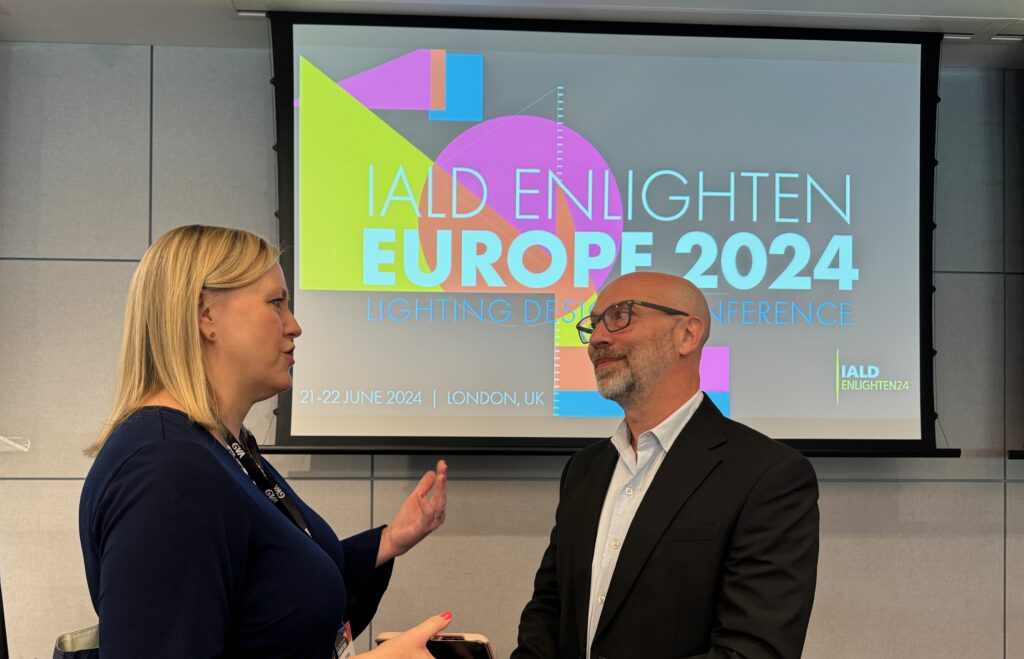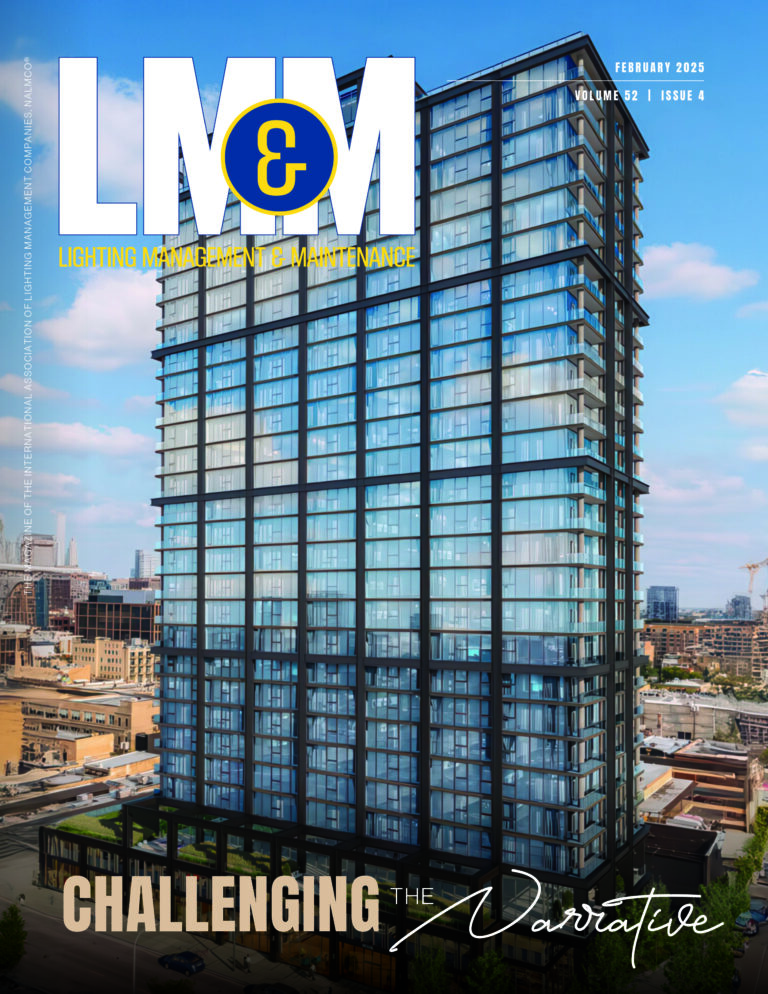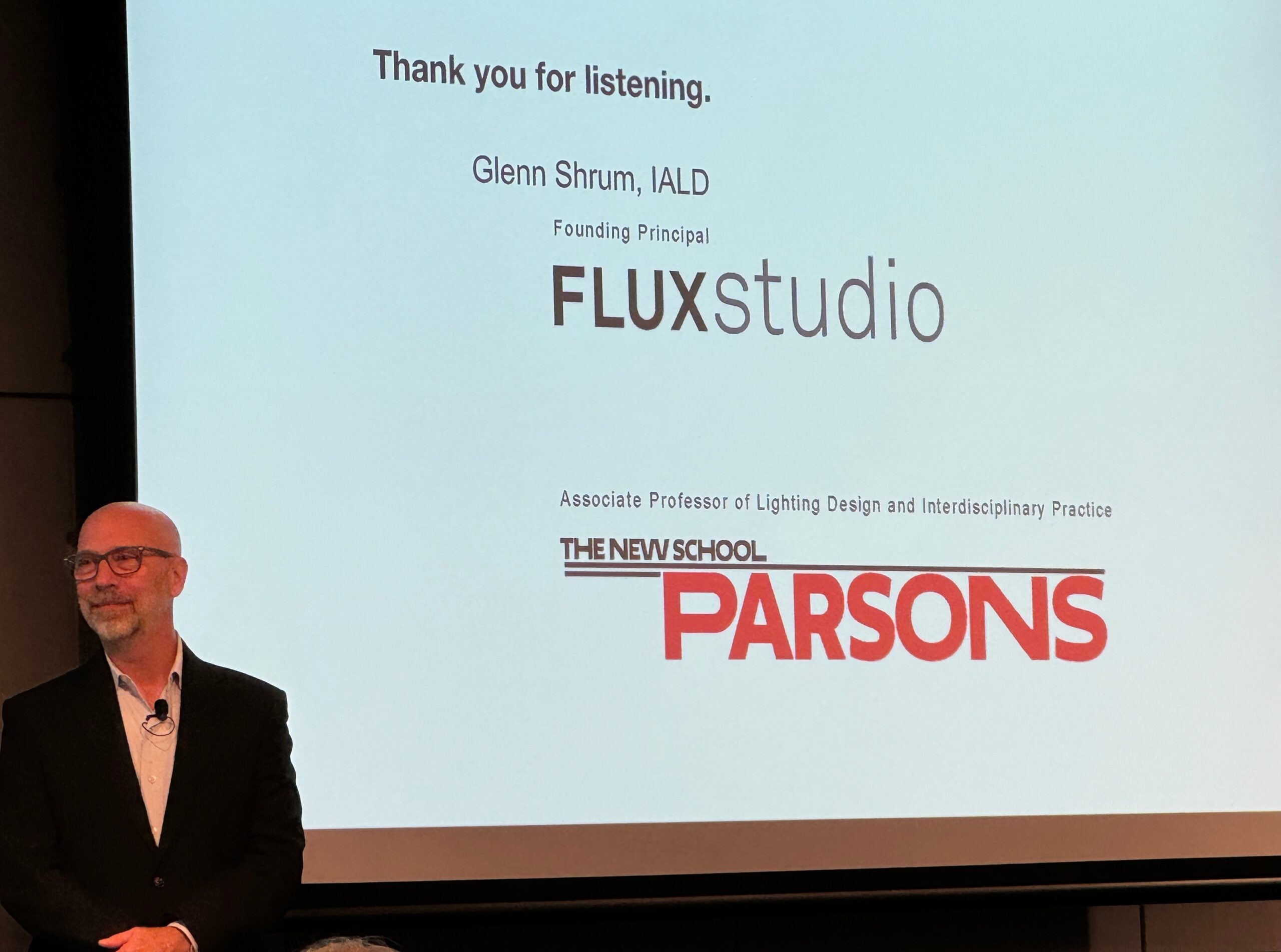Pioneers of Lighting Design: A Legacy of Innovation
Last week, at the IALD Enlighten Europe conference in London, Glenn Shrum, IALD, delivered an insightful presentation on the pioneers of lighting design. Glenn, an Associate Professor of Lighting Design and Interdisciplinary Practice at Parsons School of Design – The New School, shed light on the remarkable contributions of various lighting design visionaries and their lasting impact.
Glenn established that, in this context, pioneers of lighting design are the first individuals or groups to establish businesses primarily focused on delivering architectural lighting design services. This definition intentionally excludes individuals who, despite occasionally performing lighting design, work in businesses primarily defined as architects, illuminating engineers, manufacturers, or sales.
Apollodorus of Damascus and the Pantheon
Glenn discussed one of the earliest examples of architectural lighting design: the Pantheon in Rome, constructed around 120 AD. Designed by Apollodorus of Damascus, this iconic structure utilizes a large oculus to flood its interior with daylight, creating a dynamic and ethereal atmosphere. “The Pantheon stands as a testament to the early integration of natural light in architecture,” Glenn noted.
Sir John Soane and 13 Lincoln’s Inn Fields
Glenn then highlighted Sir John Soane, an English architect who revolutionized interior lighting in 1813 with his innovative use of skylights and strategically placed windows at 13 Lincoln’s Inn Fields in London. Soane’s designs emphasized the importance of natural light in creating spatial drama and enhancing the architectural elements of his buildings.
Modern Masters: From the Lever House to the United Nations
In the mid-20th century, lighting design evolved significantly, thanks to contributions from visionaries such as Abe Feder, Stanley McCandless, and Richard Kelly. Feder, recognized as the first independent theatrical and architectural lighting designer, founded Lighting by Feder around 1945. His notable projects include the Rockefeller Center, the United Nations Building, and the TWA Terminal at Kennedy International Airport. Feder’s pioneering work laid the foundation for modern lighting design, blending functionality with artistic expression.
Stanley McCandless, a contemporary of Feder, made significant strides in stage lighting. Teaching at Yale School of Drama and authoring ‘A Method of Lighting the Stage,’ McCandless’ contributions extended to architectural projects such as the Kresge Chapel at MIT and the United Nations General Assembly Hall. Glenn pointed out, “McCandless’ dual focus on theater and architecture set a new standard for lighting design.”
Another luminary, Richard Kelly, established his lighting design company in 1935. His projects, including the Seagram Building in New York and the General Motors Technical Center in Michigan, showcased his innovative approach to integrating lighting with architectural form, focusing on the interplay of light, shadow, and color.
Other Influences: Derek Phillips and William Lam
Derek Phillips and William Lam were instrumental in advancing lighting design in Europe and North America. Phillips, who founded Derek Phillips Lighting Consultants in 1958, authored ‘Lighting and Architectural Design’ in 1964. His notable works include the Mandarin Hotel in Hong Kong and Westminster Abbey in London. Lam, on the other hand, founded William Lam Associates in 1959 and contributed to projects such as the National Arts Centre in Ottawa and the Washington Metro prototype. His extensive writings on lighting for architecture and cities have influenced generations of designers.
Global Pioneers: Motoko Ishii and Tino Kwan
The influence of lighting design pioneers extends beyond Europe and North America. Motoko Ishii, who established her lighting design practice in 1968, brought a unique perspective to projects like the Tower of the Sun Museum at the Osaka World Expo 1970. Her innovative use of light has earned her international acclaim. Similarly, Tino Kwan, founder of Tino Kwan Lighting Consultants Ltd., has left a significant mark with projects such as the I-Club in Hong Kong. His work demonstrates the global reach and cultural adaptability of lighting design principles. “Ishii and Kwan exemplify how lighting design transcends borders, influencing global architectural practices,” Glenn concluded.
Towards a Living Archive
At the conference, Glenn announced a pilot project to expand this research to include a few new areas. By creating a publicly accessible archive of interviews, transcriptions, and project documentation, the lighting design community can ensure that the knowledge and innovations of past and present pioneers are available for future generations. This living archive will serve as a valuable resource for researchers, practitioners, and enthusiasts, fostering continued growth and inspiration in the field of lighting design.
Glenn welcomed dialogue, and the discussion highlighted how different regions and cultures contributed to the evolution of lighting design.
The session concluded when Francesca Bastianini, founding Principal of Sighte Studio, emphasized that the founders of the lighting design profession were not competing to be first. She appreciated the two-way discussion and highlighted that it is now more about understanding the history and background and creating a more inclusive space.

After the event, Glenn and I spoke about the long-standing tradition of academic scholarship mainly focusing on the accomplishments of white men of Western European descent. The current project aims to identify pioneers globally, including those in regions with emerging lighting design communities like Ghana in Africa.
In our conversation, Glenn emphasized that the pivotal year is 1970. His primary goal is to find everyone who meets the criteria before 1970, focusing on those who pivoted to a lighting designer role primarily and not a merged role.
If you are interested in helping to document the leaders in lighting design, contact Glenn Shrum at [email protected].




